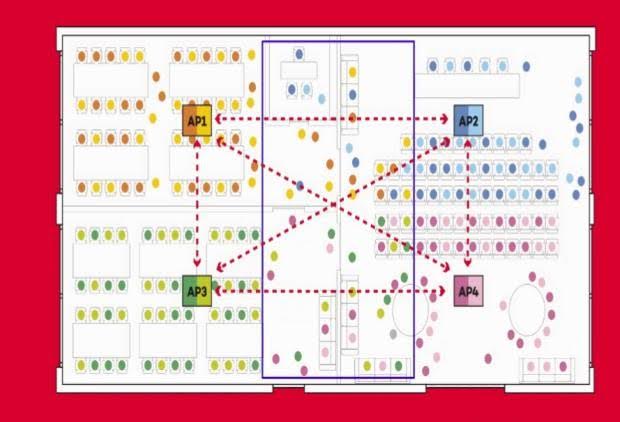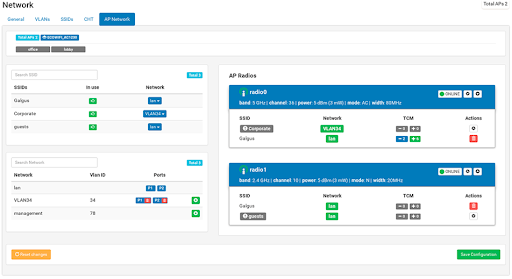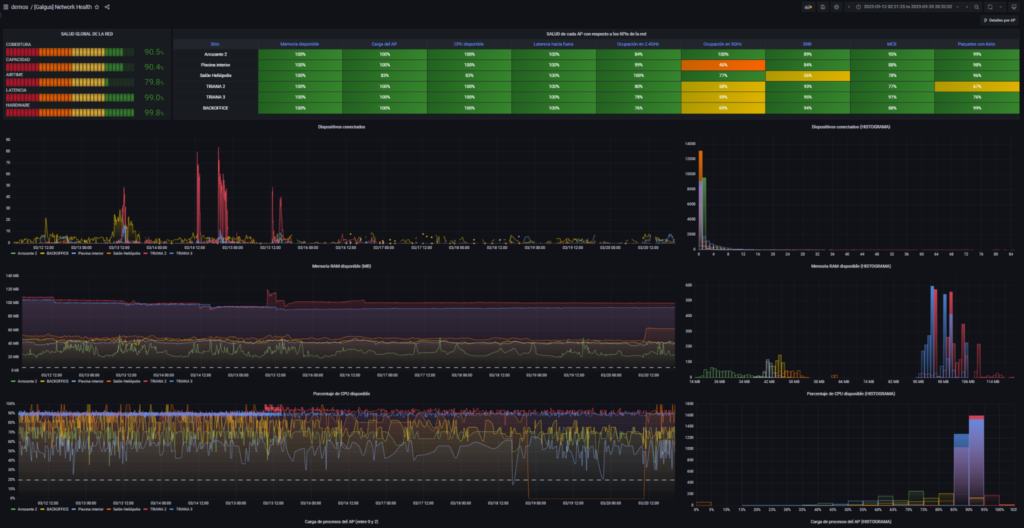In a hyperconnected world, where the demand for fast, stable, and secure connections is growing exponentially, Wi-Fi networks face increasingly significant challenges.
Traffic congestion, interference, and inefficient resource management are just some of the obstacles impacting the user experience. However, artificial intelligence (AI) and machine learning (ML) are revolutionizing the way wireless networks tackle these challenges.
According to the Wi-Fi Alliance, in the context of Wi-Fi networks, AI and ML can play a vital role in efficiently analyzing large datasets, enhancing user experiences, and optimizing network management.
A testament to their value is the European project WINDMILL (Wireless AI-Driven Network for Massive IoT in Licensed and Unlicensed Spectrum). This initiative aims to integrate artificial intelligence (AI) and machine learning (ML) into wireless networks. Its primary goal is to optimize access, resource management, and network performance, particularly in high-demand environments.
In this context, solutions like Galgus’s Cognitive Hotspot Technology (CHT) demonstrate how AI can radically transform Wi-Fi network performance. Thanks to patented algorithms operating in real time, Galgus’s technology delivers faster, more stable, and secure connections, intelligently adapting to environmental conditions without the need for human intervention.
In this article, we will explore how AI optimizes Wi-Fi network performance, the advantages it offers over traditional systems, and how Galgus technology stands out as a leader in this advancement.
How Galgus AI algorithms optimize Wi-Fi network performance

The access points equipped with Galgus’s CHT technology ensure speed, stability, and connection security, even in environments with a high number of simultaneous connections.
This is because radio resource control in the networks is distributed among all access points, cooperating with each other to maximize performance in every situation.
All of this is made possible by our numerous patented algorithms, which optimize available radio resources in real time and without human intervention. From this family of algorithms, we highlight:
- Proactive Load Balancing: enables real-time user distribution across available radios before congestion occurs. It does this by monitoring low-level metrics such as channel occupancy or queued packets.
- Smart Roaming: ensures smooth, uninterrupted transitions when a user moves into the coverage area of a new AP that can provide better service than the previous one. It eliminates the well-known “sticky client” issue.
- Automatic Channel and Bandwidth Assignment: we use genetic algorithms (evolutionary optimization) to select the best set of channels and bandwidths for the entire network based on internal and external interference. This maximizes performance while avoiding interference between nearby APs.
- Automatic Power Control: dynamically minimizes radiated power in real time. In addition to saving energy, it reduces the collision domain, enhancing the user experience for all connected devices.
- Traffic Control: sets upper and lower traffic limits to prevent certain users from overusing network resources.
- Smart Multicast: converts multicast traffic (typically video streaming to screens) into unicast, significantly improving service quality while reducing errors and retransmissions.
- Pre-balancing: intelligently assigns new users to available radios, preventing some APs from being underutilized while others become overloaded.
These AI algorithms eliminate the need for a centralized controller. What are the advantages?

The absence of a centralized controller offers numerous advantages, eliminating communication delays, single points of failure, scalability issues, and bottlenecks. Additionally, it removes the complexity of configuring and managing all controllers.
A cloud-based radio resource controller would also be problematic, as it is highly inefficient for a single point to issue commands to a large number of access points.
It’s important to emphasize that a controller-instantiated system (where one AP acts as the master and the rest as slaves) is highly inadvisable. It effectively becomes a low-performance centralized controller system that cannot scale. In fact, the limited CPU and memory resources mean that even manufacturers do not recommend it for networks with more than 25 APs.
With intelligence distributed across all APs and no centralized controller, scaling becomes trivial: simply deploy new APs. They automatically discover each other, assess the environment, and collaborate in real time with the rest of the network to maximize performance for every user.
A system with a centralized controller (or a master-slave instantiated controller) would face serious challenges in scaling, turning the controller into an overloaded machine that acts as a bottleneck and a critical point of failure.
What results does Galgus AI deliver in terms of user experience?
This is why we can confidently say that Galgus’s solution strives to achieve maximum performance with the available resources.
To draw a comparison, a Wi-Fi network without technology like Galgus’s CHT will deliver inconsistent performance depending on the conditions of the day:
- Poor performance when conditions are unfavorable.
- Mediocre performance under normal conditions.
- Good performance when conditions are ideal.
In contrast, a Wi-Fi network with Galgus’s CHT technology aims to deliver excellent performance in any situation, whether on good days or bad. The algorithms continuously work to optimize the network without human supervision, adapting to changing environmental conditions.
Optimizing Wi-Fi network performance is no longer just a matter of infrastructure but of intelligence. By integrating advanced AI algorithms, solutions like Galgus’s Cognitive Hotspot Technology (CHT) ensure stable, secure, and high-performance connections, even in high-demand environments.
If you want to take your organization’s connectivity to the next level and deliver an unparalleled user experience, now is the time to embrace innovation.
Contact Galgus today and discover how we can help you transform your Wi-Fi network.









